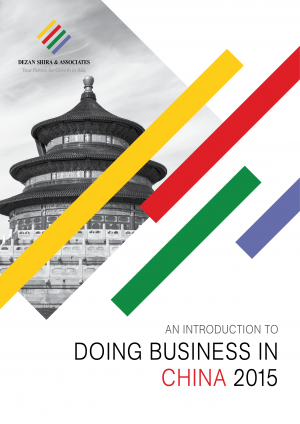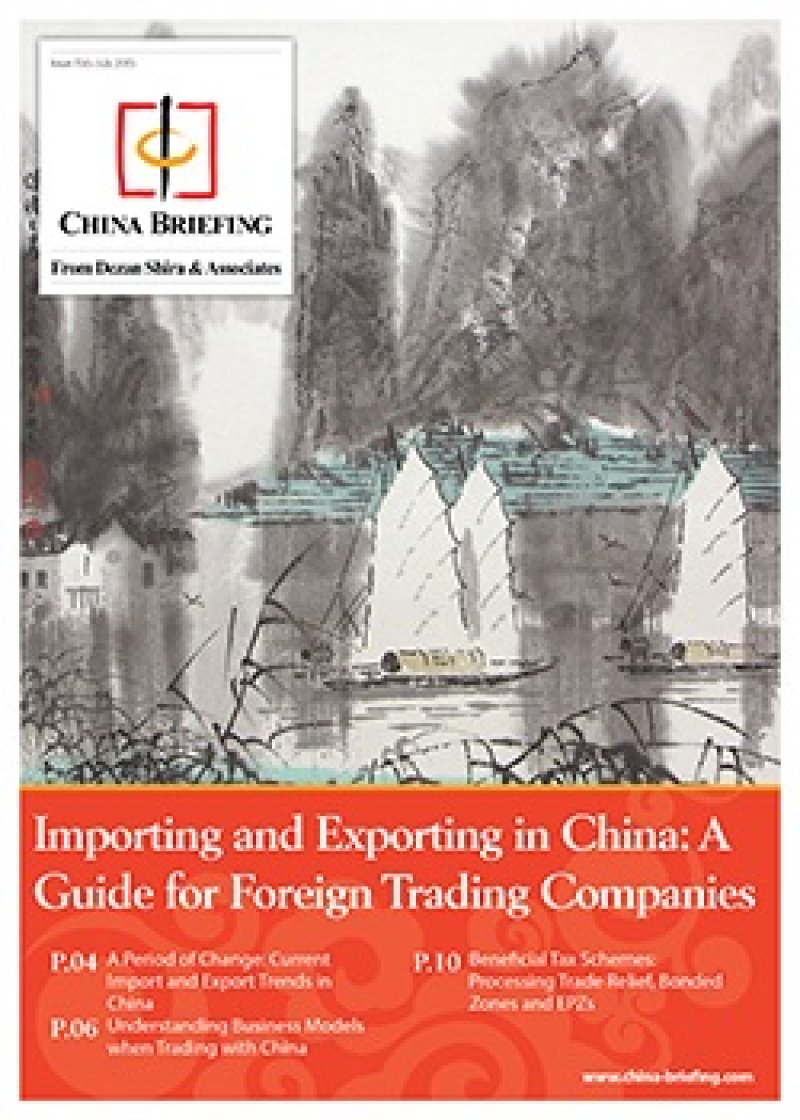Weathering the Storm: Finding Opportunities in China during its Economic Slowdown
2016 is set to be a challenging year for investors in China. The country’s economic growth slowed to 7.4 percent in 2015, causing it to miss its full-year economic growth target for the first time since 1998. The Chinese government is likely to further lower its 2016 growth target down to around 6.5 percent, as actual 2015 gross domestic product (GDP) growth looks set to come in at about 6.8 percent – still below the target of 7 percent.
China’s lower growth has become a top concern for foreign investors and the road ahead is filled with uncertainty. However, with the right market intelligence and an informed business strategy, the country’s economic downturn might create opportunities for companies that fully understand new market trends and, more importantly, their customer base.
China’s socio-economic conditions and market potential vary drastically per region. While the local economies in some first-tier cities have plateaued, China’s Go West and Go Inland campaign has led to pronounced economic activity in its inland and western regions. Qualified enterprises in the West China region can enjoy a reduced CIT rate of 15 percent upon approval by the relevant tax office. In the first three quarters of 2015, some of China’s inland regions saw local GDP growth of over 10 percent, including Chongqing (11 percent) and Guizhou (10.8 percent).
In 2015, the Chinese government set up three new free trade zones (FTZs) in Guangdong, Fujian and Tianjin, which has helped boost their GDP growth rates by 7.9 percent, 9 percent and 9.4 percent, respectively. The FTZs offer numerous incentives for investment, including tariff exemption and tax breaks to qualified companies and manufacturers. Buyers can also purchase imported goods that are stored in the zones without paying import duties.
![]() RELATED: Business Advisory Services from Dezan Shira & Associates
RELATED: Business Advisory Services from Dezan Shira & Associates
In the past, foreign investment in China was largely concentrated in the developed Yangtze River Delta region. Today, the country’s fast-growing western regions and new FTZs are ready for investment and particularly suitable for start-up businesses.
RMB Depreciation
The RMB-USD exchange rate depreciated by 4.4 percent through the course of 2015. This weakness is set to accelerate in Q1 2016, meaning foreign companies with capital measured in foreign currency will be able to acquire more domestic assets with the same amount of capital. Goods made in China will therefore be even cheaper for overseas buyers. Moreover, for companies trading and paying employees mostly through certain foreign currencies, a weakened RMB against the U.S. dollar means lower business costs.
Conversely, selling to China can be more expensive. To prevent a sudden drop in foreign trade, China’s Ministry of Finance slashed tariffs on clothing, footwear and beauty products by 50 percent in June, 2015 – good news not only for companies and manufacturers seeking to export to China, but also for international players and distributors already operating there.
Retail Sales Boom
Consumption continues to play a key role in driving economic growth in China despite the country’s perceived economic trouble, accounting for 60 percent of GDP in the first half of 2015. China’s retail sales increased 11.2 percent to RMB 2.8 trillion in November – up 0.2 percent from the previous month and the fastest expansion in 2015. This year’s Singles’ Day e-commerce event saw sales up 60 percent from the previous year, totaling RMB 91.2 billion (US$14.3 billion). 2014’s record was surpassed within 14 hours of the start of the holiday, with US$1.4 billion generated in the first eight minutes and US$5 billion in the first 90. From January to November, 2015, the national online retail sales of goods and services grew by 34.5 percent year on year to RMB 3.5 billion.
Rising Middle Class
The retail sales boom is partly a result of the government’s recent policy to stimulate foreign trade – the central bank cut interest rates five times in 2015 to boost domestic spending. However, the main driving force for China’s booming retail industry is the growing spending power of the new upper middle class.
China’s upper middle class is getting younger. The expanding urban middle class is increasingly made up of skilled white-collar workers, teenagers and people in their early 20s. This segment, which is poised to be the new mainstream, is generally well-educated and much more open to foreign brands. While China’s middle class expansion is largely happening in big cities such as Beijing and Shanghai, investors need to note that it will soon become much more evenly spread geographically. It is estimated that, by the year 2022, the upper middle class will account for 54 percent of urban households and 56 percent of urban private consumption.
What Can We Offer?
Undoubtedly, foreign investors doing business in China are facing challenges. On the one hand, many foreign manufacturers have been forced to withdraw their investments in China because of rising manufacturing and labor costs. The country’s ongoing tax reform and, in places, disappearing tax incentives make it even more difficult for investors to turn a profit.
On the other hand, with the right investment strategy, opportunities can be found in numerous emerging industries, such as education and high-end manufacturing. The explosive growth of China’s upper middle class offers numerous opportunities for investors: China is no longer simply the “world’s factory,” but also one of the most lucrative export and consumer markets for all types of consumer goods. Utilizing market and competitive intelligence to understand who your target customers are is key to a successful business in China, and one of the few ways to turn a profit amidst continued market contraction. Emerging Strategy specializes in providing such intelligence and can ensure that your business remains firmly on the road to growth.
|
About Emerging Strategy Emerging Strategy is the leading provider of customized market intelligence in the education industry. Their work in this industry focuses on bringing cutting-edge content, technologies, language learning, skill training and assessments in front of institutional and retail customers. For more information on Emerging Strategy and our services, please contact us at info@emerging-strategy.com. |
![]()
 An Introduction to Doing Business in China 2015
An Introduction to Doing Business in China 2015
Doing Business in China 2015 is designed to introduce the fundamentals of investing in China. Compiled by the professionals at Dezan Shira & Associates, this comprehensive guide is ideal not only for businesses looking to enter the Chinese market, but also for companies that already have a presence here and want to keep up-to-date with the most recent and relevant policy changes.
 Selling, Sourcing and E-Commerce in China 2016 (First Edition)
Selling, Sourcing and E-Commerce in China 2016 (First Edition)
This guide, produced in collaboration with the experts at Dezan Shira & Associates, provides a comprehensive analysis of all these aspects of commerce in China. It discusses how foreign companies can best go about sourcing products from China; how foreign retailers can set up operations on the ground to sell directly to the country’s massive consumer class; and finally details how foreign enterprises can access China’s lucrative yet ostensibly complex e-commerce market.
Importing and Exporting in China: a Guide for Trading Companies
In this issue of China Briefing, we discuss the latest import and export trends in China, and analyze the ways in which a foreign company in China can properly prepare for the import/export process. With import taxes and duties adding a significant cost burden, we explain how this system works in China, and highlight some of the tax incentives that the Chinese government has put in place to help stimulate trade.
- Previous Article Navigating China’s FTZs: Market Access, Tax Systems and Registration Procedures, Part 1
- Next Article Chancen für ausländische Unternehmen in Chinas Hochtechnologiesektor










